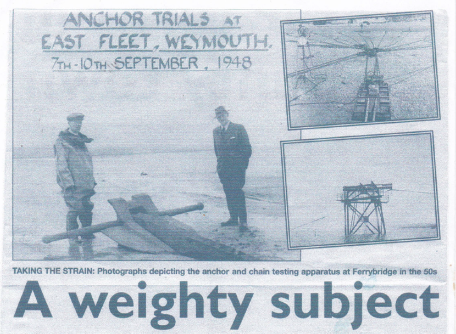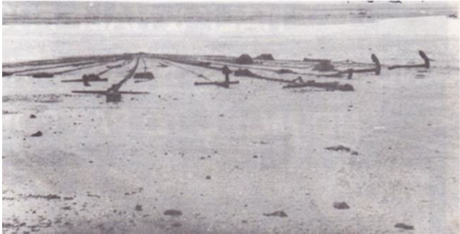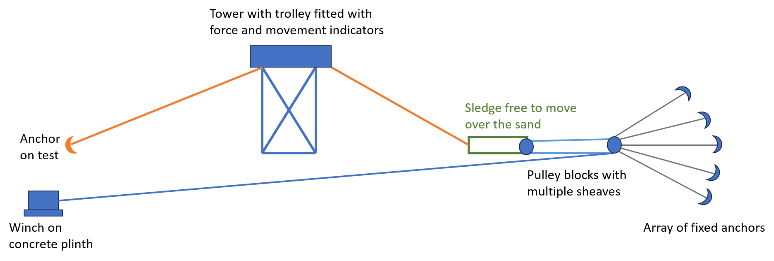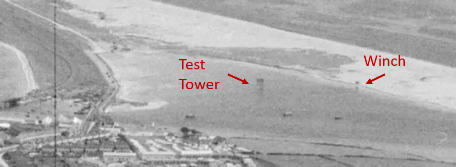Chesil Beach and the Fleet Lagoon
18 miles and 180 billion pebbles
Ferrybridge - Anchor Testing

During WWII the navy experimented with improved anchors for their ships but no design was optimised. Following the end of the war a more formal set of tests were planned. The best site for these tests was found to be the sand flats at Ferrybridge.
A series of tests starting in 1948 and lasting several years were carried out consisting of testing periods, then redesigns, then further tests. These tests led to the design of the anchor known as the AC14 which is now in widespread use by navy and civilian ships around the world.
The tests were not without their difficulties. Sand can be firm or can act like a liquid under some circumstances and a number of anchors were lost into the sand and had to be re-located. Even the support vehicles suffered this fate with a crane and a lorry getting stuck and completely submerged at high tide.
There is little information available on these tests but the local newspaper, the Dorset Echo, carried a feature in April 2000 with pictures and information.
The method of testing is illustrated in the diagram below.

The Portland Free News also contained some information on how the tests were conducted.

These pictures from the Echo showing an early version of the anchor to be tested, the fan of anchors and the sledge used to exert a force on the test anchor and the measurement tower.
This picture shows the array of anchors used to to provide a fixed point against which the anchor under test was pulled.
The anchor to be tested is connected to a trolley that can run along the top of the tower. This trolley has indicators for trolley movement and the force applied to the anchor. The other side of the trolley is connected to a sledge that is free to move on the surface of the sand. The fan of fixed anchors provide a solid base for the test force on the anchor. A pulley system with multiple sheaves magnifies the force applied by the winch to the levels needed to test the anchor. The winch is mounted on a solid concrete base on the Chesil Beach shoreline of the Fleet.
During the test, the winch applies a force to the pulley system which then tries to drag the sledge along the sand. This results in a force, magnified by the pulley system, on the test anchor via the trolley on the tower. The force is steadily increased until movement of the anchor is detected using the indicator on the trolley on the tower.

The AC14 anchor is a high holding power, stockless anchor which is now in widespread use by civilian and military ships worldwide.


The concrete base for the winch can still be seen on Chesil Beach. When built, the level of pebbles was much higher than it is today.

In this picture from June 1953 the test tower and winch locations can be seen.






